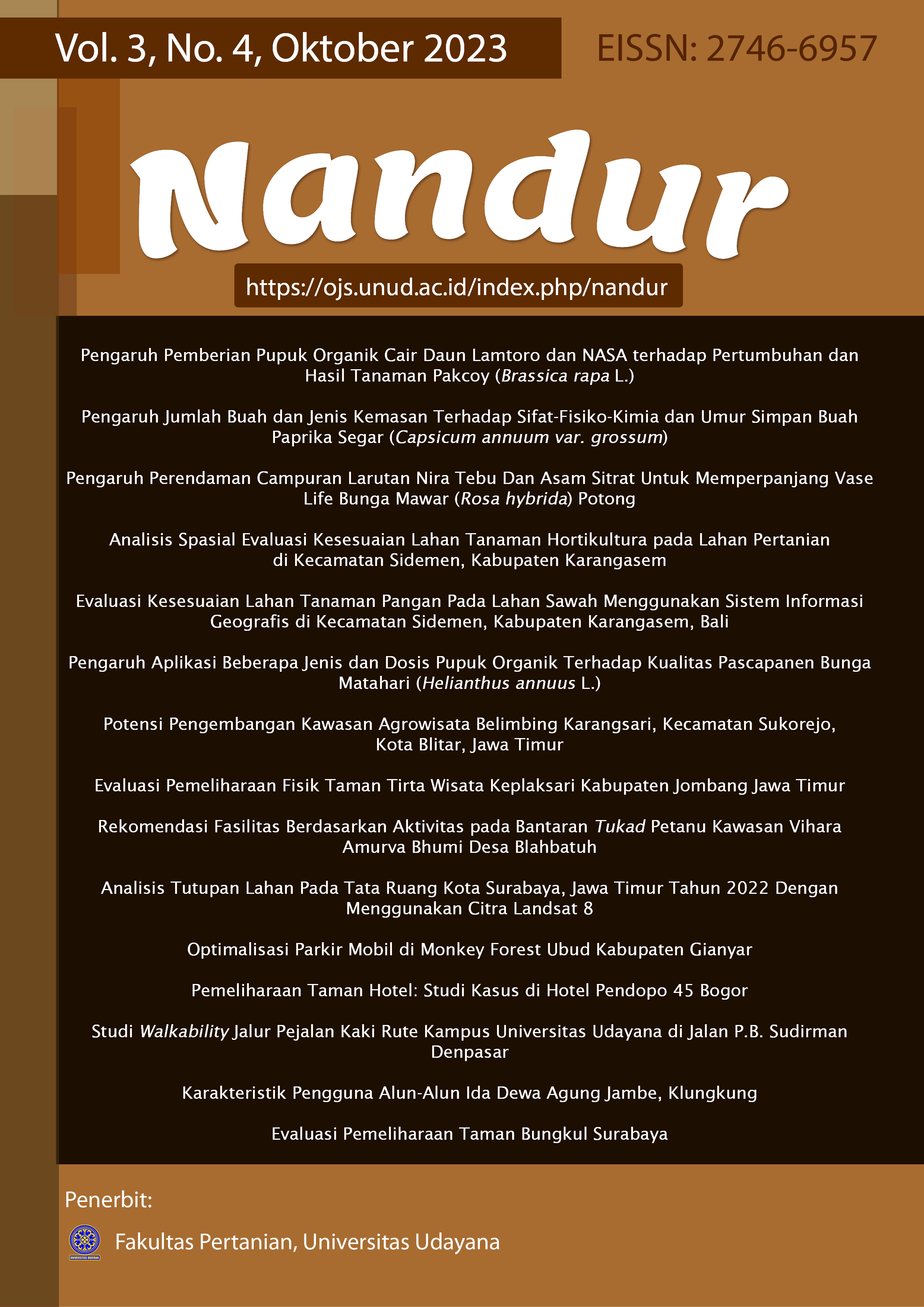Analisis Tutupan Lahan Pada Tata Ruang Kota Surabaya, Jawa Timur Tahun 2022 Dengan Menggunakan Citra Landsat 8
Abstract
The city of Surabaya is the second largest metropolitan city in Indonesia. The problem in Surabaya city is the second largest metropolitan city in Indonesia. The problem in the city of Surabaya is the conversion of built-up land which is not in harmony with the increasingly limited availability of land. It is necessary to study the distribution of land cover over a certain period of time. This study aims to provide information on the spatial distribution of land cover in the 2022 Surabaya City spatial planning, the results of the accuracy test of the application of supervised classification on the 2022 Surabaya City land cover map, and to determine the availability of land cover based on the spatial plan in Surabaya City in 2022. 2014-2034. The research method used is a qualitative method, remote sensing data processing is carried out by supervised classification, and the accuracy test is carried out using Kappa accuracy (KA) through a confusion matrix. The results of the study show that the dominant land cover in the city of Surabaya in 2022 is built-up land in residential areas covering an area of 11,481.9 Ha. The accuracy test has a kappa index accuracy of 0.84. The availability of built-up land cover based on the Surabaya City Spatial Plan for 2014-2034 covers an area of 7,589.2 Ha or 28.3%.
References
Congalton, R.G., Green K. (2009). Assessing the Accuracy of Remotely Sensed Data: Principles and Practices. New York (US): CRC Press. 179 hlm.
Damtea, W.G., Kim, D. I. S. (2020). Spatiotemporal analysis of land cover changes in the Chemoga Basin, Ethiopia,using landsat and Google Earth images. Sustainability, Vol. 12.
Egorov, A.V., Hansen, M.C., Roy D.P., Kommareddy, A., Potapov, P.V. (2015). Image interpretation guided supervised classification using nested segmentation. Remote Sensing of Environment, Vol. 165. Pages 135-147.
Landis, J. R., Koch, G. G. (1977). The Measurement of Observer Agreement for Categorical Data. Biometrics, Vol. 53. Pages: 159-174.
Sampurno, R. M., Thoriq, A. (2016). Klasifikasi Tutupan Lahan Menggunakan Citra Landsat 8 Operational Land Imager (Oli) Di Kabupaten Sumedang. Jurnal Teknotan, Vol. 10 (2).
Silalahi, M. D. (2006). Hukum Lingkungan Dalam Sistem Penegakan Hukum Lingkungan Indenesia. Alumni Bandung. Hal. 80.
Simamora, F. B., Sasmito, M. B., Hani’ah. (2015). Kajian Metode Segmentasi Untuk Indentifikasi Tutupan Lahan dan Luas Bidang Tanah Menggunakan Citra Google Earth. Jurnal Geodesi Undip, Vol. 4 (4): 43–51.
Susanti, Y. Syafrudin, Helmi, M. (2020). Analisa Perubahan Penggunaan Lahan di Daerah Aliran Sungai Serayu Hulu Dengan Penginderaan Jauh dan Sistem Informasi Geografis. Bioedukasi: Jurnal Pendidikan Biologi, Vol. 13 (1): 23-30.
Kusumo, N. K. A., Wirdiani, Sasmita, I. G. M. A. (2016). Aplikasi Analisa Perubahan Penggunaan Lahan di Provinsi Bali. Merpati, Vol. 4 (3):225-236.
Wahyuni, N. I., Arini, D. I. D., Ahmad, A. (2017). Identifikasi Perubahan Kerapatan Vegetasi Kota Manado Tahun 2001 Sampai 2015. Majalah Ilmiah Globe, Vol. 19. No. 1.448.



